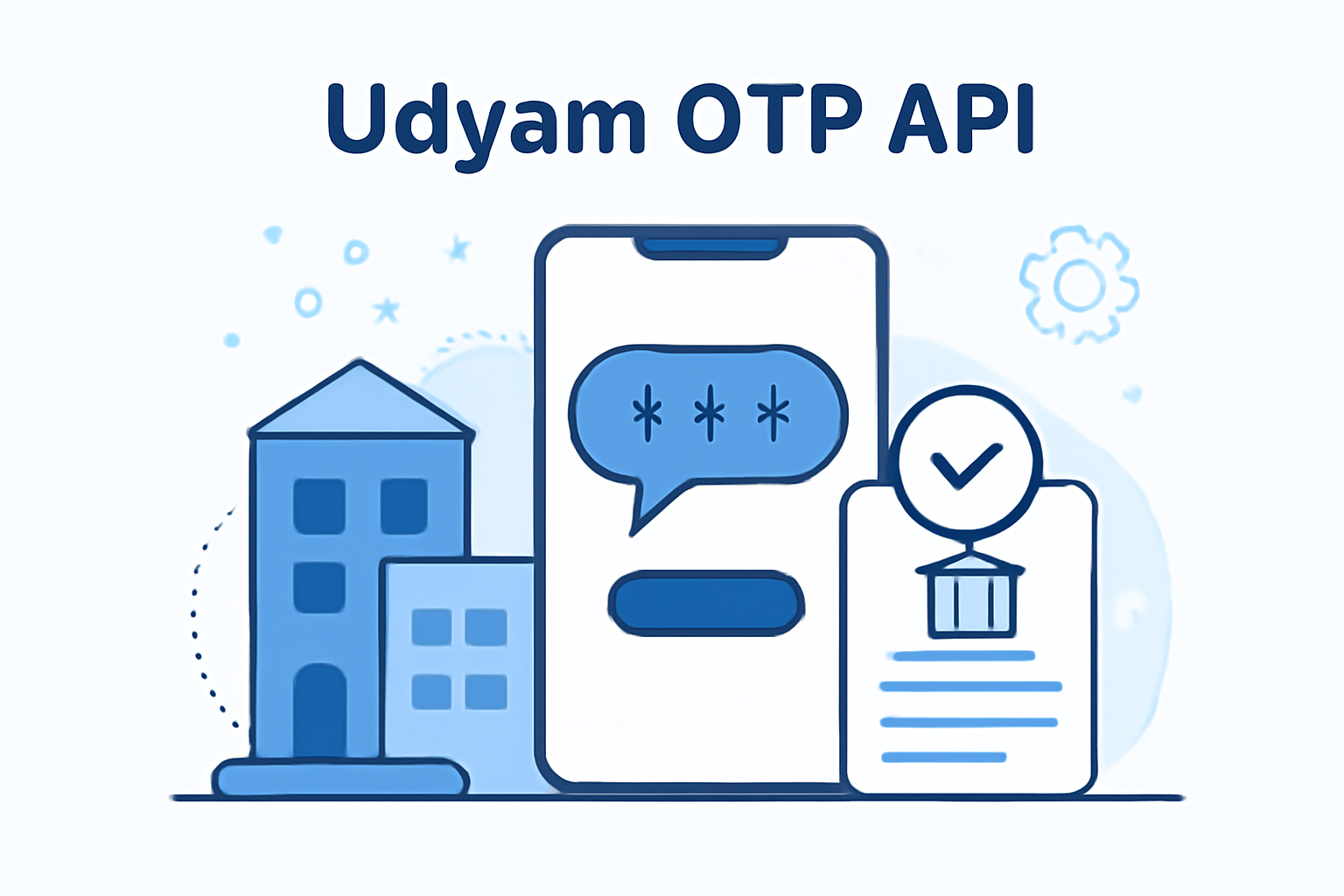Overview#
The Udyam OTP API category provides secure verification and data retrieval capabilities for enterprises registered under the Udyam Registration system in India. These APIs enable applications to authenticate users through OTP verification sent to registered mobile numbers and retrieve official enterprise details from the Udyam database. This streamlined verification process ensures secure access to enterprise information while maintaining compliance with government verification standards.Parent Category: Root/Corporate
Child Categories: None
APIs in this category: Send OTP, Submit OTP
Key Capabilities#
Main Functionality
This API category enables secure two-step verification to access official Udyam-registered enterprise details through a mobile OTP-based authentication system.
OTP Generation
Generate and send one-time passwords to mobile numbers registered with Udyam for secure authentication
Verification
Validate OTPs to confirm user identity and authorize access to enterprise information
Data Retrieval
Fetch comprehensive enterprise details from the official Udyam database after successful verification
Common Use Cases#
Verify enterprise credentials during loan application processing
Validate MSME status for specialized financial product eligibility
Automate KYC processes for business accounts
Integration Considerations#
Best Practices
Store the client ID securely between the Send OTP and Submit OTP calls
Implement proper error handling for cases where mobile numbers don't match registration records
Add appropriate timeout handling for OTP expiration scenarios
Consider implementing rate limiting to prevent abuse of the OTP generation endpoint
OTPs are typically valid for a limited time period (usually 10-15 minutes)
There may be daily limits on the number of OTPs that can be sent to a single mobile number
The API can only verify enterprises that are officially registered in the Udyam system
Mobile number must exactly match the one in the Udyam registration records
How APIs in this Category Work Together#
The Udyam OTP APIs work together in a sequential verification flow that ensures secure access to enterprise data through a two-step authentication process.Key Integration Patterns:Send OTP → Submit OTP: The standard verification flow where an OTP is first sent to the registered mobile number, then validated to retrieve enterprise details
Send OTP (retry): In cases where the OTP expires or is not received, the Send OTP endpoint can be called again to generate a new OTP
Submit OTP (with stored client ID): Applications must store the client ID returned from Send OTP to use in the Submit OTP request
Corporate Verification: Provides additional verification methods for corporate entities beyond Udyam registration
Business Information: Offers broader business data beyond what's available in Udyam registration records
KYB (Know Your Business): Enables comprehensive business verification workflows that may include Udyam verification as one component
